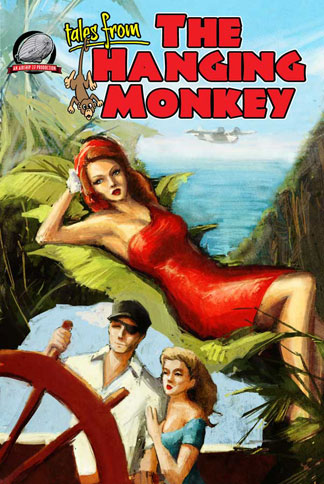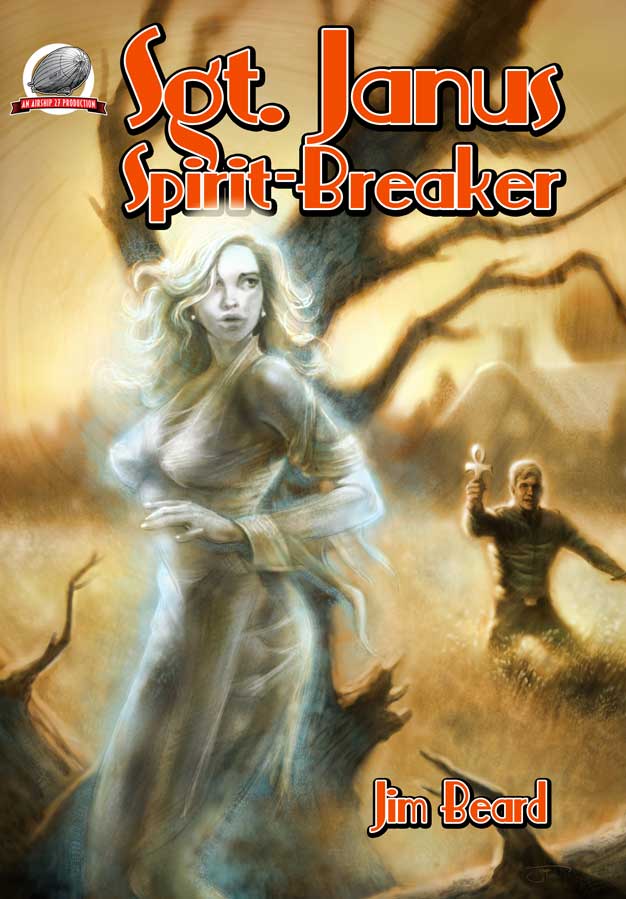Pro Se Presents – the Eclectic Voice of New Pulp
 Pro Se Press is one of several New Pulp specialty small presses that have sprung up over the past few years to give voice to new writers. While Pro Se publishes pulp novels like their peers, they have largely set themselves apart in the field by also publishing a monthly print magazine, Pro Se Presents. Issue 15 was just published and presents five diverse examples of New Pulp from five very talented writers. The periodical is also published as an e-book each month and is affordably priced in keeping with traditional pulp titles of decades past – something most small presses are unable to otherwise do thanks to the economics of print on demand or small print runs.
Pro Se Press is one of several New Pulp specialty small presses that have sprung up over the past few years to give voice to new writers. While Pro Se publishes pulp novels like their peers, they have largely set themselves apart in the field by also publishing a monthly print magazine, Pro Se Presents. Issue 15 was just published and presents five diverse examples of New Pulp from five very talented writers. The periodical is also published as an e-book each month and is affordably priced in keeping with traditional pulp titles of decades past – something most small presses are unable to otherwise do thanks to the economics of print on demand or small print runs.
 Sean Ali’s striking cover art and moody interior illustrations do an excellent job of capturing the unique feel of each tale. The magazine’s stellar editorial staff [Tommy Hancock, Lee Houston, Jr., Frank Schildiner, Barry Reese, and Don Thomas] has done an excellent job of capturing the mix of genres that were found under the pulp banner in the heyday of the 1920s and 1930s. From a modern standpoint, there is a bias to favor the superhero prototypes (such as Doc Savage, The Shadow, The Spider, etc.) or the more famous offshoots of the pulps, the hardboiled detective and the sword & sorcery barbarian hero. This tends to shortchange the many boxing stories, westerns, romances, and humorous tales that were also staples of the pulp world. Happily, Pro Se Presents restores this balance.
Sean Ali’s striking cover art and moody interior illustrations do an excellent job of capturing the unique feel of each tale. The magazine’s stellar editorial staff [Tommy Hancock, Lee Houston, Jr., Frank Schildiner, Barry Reese, and Don Thomas] has done an excellent job of capturing the mix of genres that were found under the pulp banner in the heyday of the 1920s and 1930s. From a modern standpoint, there is a bias to favor the superhero prototypes (such as Doc Savage, The Shadow, The Spider, etc.) or the more famous offshoots of the pulps, the hardboiled detective and the sword & sorcery barbarian hero. This tends to shortchange the many boxing stories, westerns, romances, and humorous tales that were also staples of the pulp world. Happily, Pro Se Presents restores this balance.
Issue 15 gets underway with David White’s “Doc Panic.” While the title may recall Doc Savage, White has crafted more than the simple knock-off it might suggest in this clever blend of pulp archetypes and Japanese martial arts. Phineas Montgomery is the man behind the mask. An heir to a fortune, Montgomery grew up scarred as a witness to his Satanist parents’ murderous rituals involving the human sacrifice of abducted children and derelicts. A Japanese servant stole young Montgomery away from his parents’ house of madness and smuggled him to Japan, where the boy was trained in the arts of Ninjitsu and Akido. Along the way, the young man also picked up an addiction to certain illegal powders that help him manage his pain. White has achieved an interesting balance between the masked vigilantes of the Golden Age and the Men’s Adventures paperback originals of the 1970s with their mix of martial arts and gritty urban crime. There is little doubt that this is only the first of many appearances for the character. White has stumbled upon a winning formula here that makes Doc Panic a character worthy of commanding the cover slot for his debut.
 Tales of the Gold Monkey only lasted one season in the early 1980s, but the series has developed a steady cult following in the years since its brief network run. Dismissed as nothing more than an inferior small screen knockoff of the contemporaneous Raiders of the Lost Ark, the series has finally started to earn the recognition denied it at the time. While it took a Hollywood blockbuster to convince network executives to green-light the series, the proposal had been around since the 1970s and the show was conceived, like Raiders, in homage to the serials and classic adventure stories of the past.
Tales of the Gold Monkey only lasted one season in the early 1980s, but the series has developed a steady cult following in the years since its brief network run. Dismissed as nothing more than an inferior small screen knockoff of the contemporaneous Raiders of the Lost Ark, the series has finally started to earn the recognition denied it at the time. While it took a Hollywood blockbuster to convince network executives to green-light the series, the proposal had been around since the 1970s and the show was conceived, like Raiders, in homage to the serials and classic adventure stories of the past.
